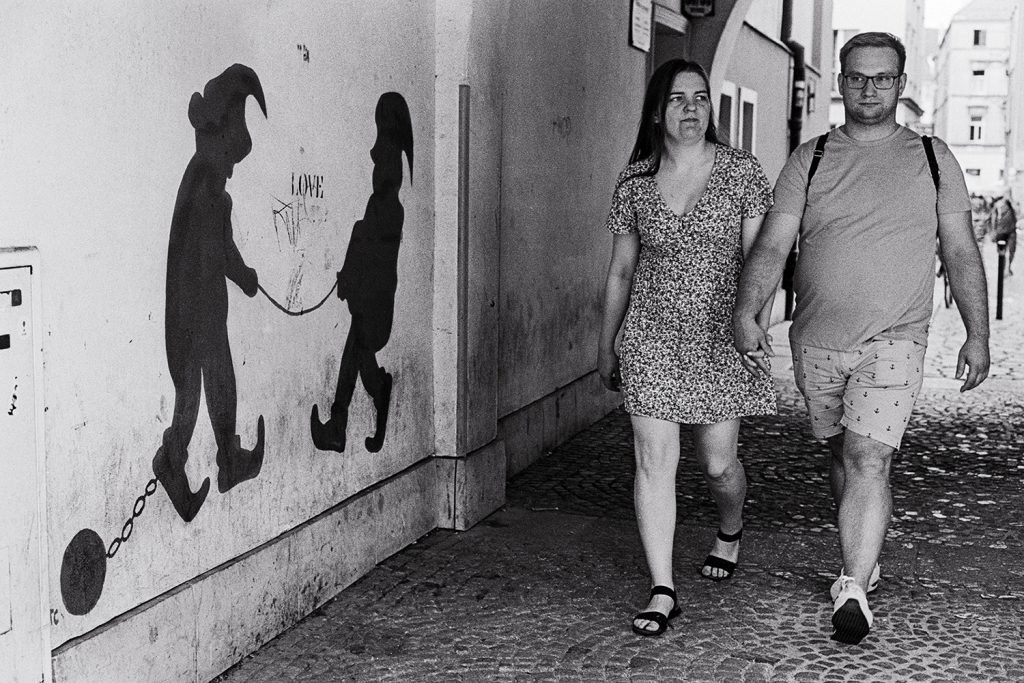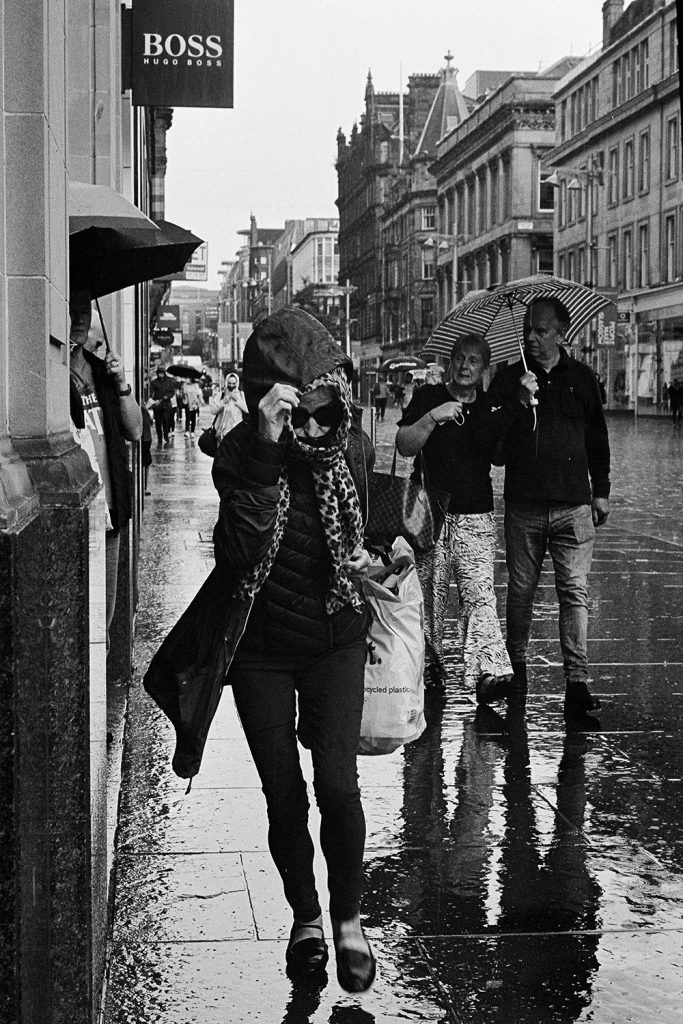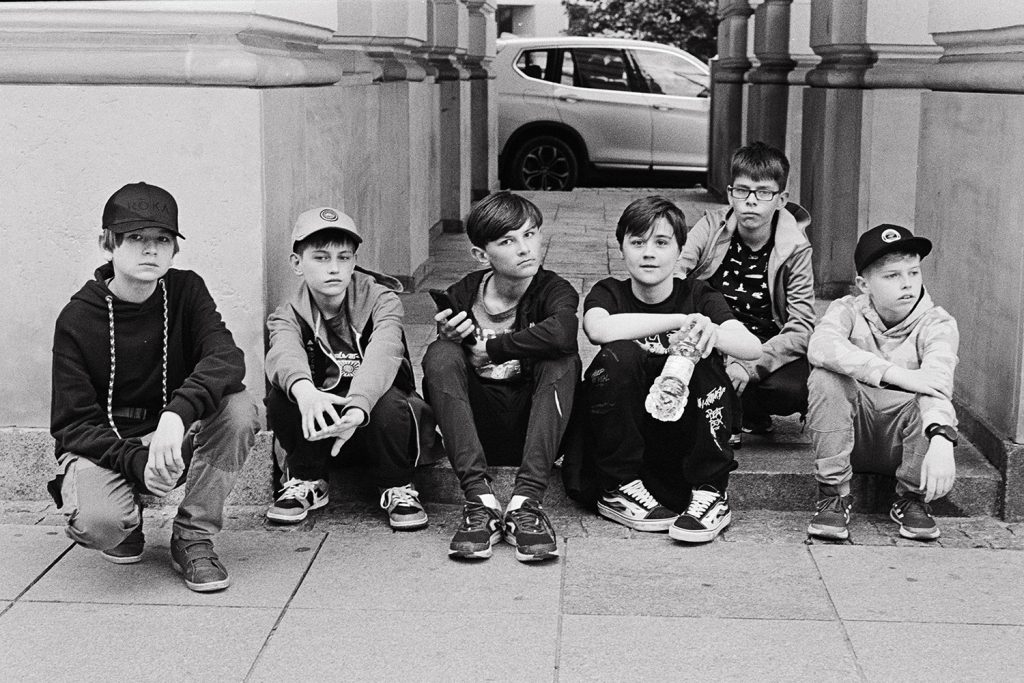As a street photographer teaching high school photography, my students are often fascinated by the candid photographs of people going about their lives. Whether looking through pictures of Cartier-Bresson, Garry Winogrand, Jill Freedman, or – less exciting, I’m sure – my own, there would be a myriad of curious questions. How did she get so close? Where on earth was he standing? How did he not get caught? How did they get so lucky?
In truth, candid street photography is not easy. It is a dynamic, stealthy practice, often beset with failure, that requires some nerve, even audacity, to be close enough, ready to fill the frame. The street photographer makes photographs without permission not to avoid accountability, but instead to capture the scene as they see it, unbothered by the presence of the camera. Provided they work with sincerity and empathy, there is nothing inappropriate or transgressive in making these pictures.
Thankfully, there are a number of subtle, illusory techniques used by the masters that can help the street photographer go unnoticed. Well, mostly.
The Misdirect

The irrational fear that stands between street photographers and opportunities for engaging and exciting pictures is that of being caught in the act and that trouble may ensue. Most often, when someone sees a camera their response is one of curious suspicion. While it can happen, it is rarely anger. Nevertheless, once the subject is aware of the camera, the picture irrevocably changes.
By far and away the most popular technique in candid street photography, used by almost all of us is the Misdirect, sometimes known as the Tourist. Last year, I was fortunate enough to stand on the Place de la République in Paris and, from afar, watch Richard Kalvar masterfully employ this approach.
In practice, it is simple. Approach the scene, for example, a couple in conversation, by pretending to photograph something else. Something beside, above, below, behind – it doesn’t matter. If the subject becomes curious or suspicious, step out to compose from a different angle on your pretend subject. Like the NPCs in a stealth video game, eventually the question mark that is metaphorically hovering over your subject will disappear, and then you can return for the shot when they are convinced they are standing next to an enthusiastic tourist.
The Misunderstanding

Similar to the Misdirect, the Misunderstanding also applies some creative sleight of hand or, I suppose, sleight of lens. The previous technique is most useful in situations when you are approaching a subject, whereas this one is effective when the subject is moving towards you.
Walking along a busy city street you may see, for instance, a character dressed in a peculiar or visually arresting way. As he walks past, you raise the camera to your eye, compose and click… you remove the camera from in front of your face, wind on the film and are about to carry on but this eccentric has decided to take issue with your photograph and give you a piece of his mind.
A clever, if cute, trick is to keep the camera to your eye for some time after the subject has passed. Most often, any suspicions raised by the presence of the camera are allayed as the character turns to see, in fact, the photographer they believed to be picturing them was in fact photographing something else. This technique is particularly useful for the beginner lacking in confidence, but is useful for all, particularly to avoid an unwelcome confrontation.
The Mistake

There is a video on YouTube and, one would imagine, saved to many a street photographer’s hard drive taken from Michael Engler’s film, Contemporary Photographie [sic] In The USA. The extract is a short interview with Garry Winogrand as he photographs on the streets of what I imagine is Los Angeles. This video is both illustrative and instructive of this particular technique.
Watch the video closely and one will see the famously kinetic and jittery Winogrand raise his Leica to his eye, before it gets there, he has composed the frame and released the shutter. Without missing a beat, he takes the camera from his eye, shakes his head, and feigns to make adjustments to the focus or the aperture, all the while the unsuspecting subject sees someone unhappy with their choices, or worse still, with a defective or substandard camera.
This particular approach is one that use often, however, it is not easy and takes an abundance of practice. One must learn to compose through the viewfinder as it is approaching the eye – one must, nevertheless, compose!
Later, in the video, in a nod to the Misdirect, Winogrand goes further when he makes a photograph of a subject who passes by, eyes locked on the photographer. Winogrand turns and follows the gentleman past, pretending not to see him, pretending to be looking at something else. It truly is a skilled performance.
The Mischievous

There are photographers, of course, who are less concerned with remaining invisible, feeling instead free and confident to make their presence known. Some use the camera to provoke a reaction from their subject. Unposed and still candid in nature, this style of street photography is, however, more aggressive. There are many ways to undertake this approach. Bruce Gilden, for instance, is famous for pushing boundaries and bringing his camera and an off-body flash very close to his subject.
There is, however, still technique. If you watch videos of Gilden on the street, he often carries his camera and flash with his hands crossed behind his back, bringing them forward to make the photograph only at the very last moment.
Though Gilden takes this approach to its extreme, there is a place for it in your street photography toolbox. Not every situation requires a quiet unseen approach. Even if such an approach is preferable it may be impossible, at which point the decision has to be made whether to dive in, come what may.